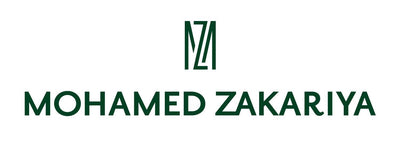Rhythm in R
RHYMING IN R
A Poem by Calligrapher Ibnul-Bawwab
On the Science of the Pen, Ink, Writing, and Paper
Translated by Mohamed Zakariya
In the name of God, full of mercy to all His creation, full of mercy to His believers. May God grant mercy and peace to His Prophet Muhammad, his family and companions, all of them.
The Sheikh, Abul-Hasan Ali ibn Hilal, the scribe of Baghdad, known as Ibnul-Bawwab, said:
To you who wishes to excel in writing / and strives for the beauty of calligraphy and the drawing of letters:
If your resolution to learn calligraphy is genuine, / then beseech your Lord and Master to make it easy.
Prepare from among your pens the straightest and hardest / that will form and shape elegantly with ink,
And when you turn to carve it, strive / when judging the dimensions, for the medium proportion.
[Commentary of Ibnul-Wahid: Don’t cut the tip too long or too short.]
Inspect the two ends of the reed and make the cuts for shaping the tip / on the narrower end.
On making the opening cut, make it clean and fair, / not too long or too short.
Similarly, leave a medium amount of pith, / between abundance and paucity.
Split the nib in the middle so the ink will flow / to both sides of the nib and make the letters flow as required.
Practice this operation until you can do it / with the expertise of a skilled physician.
Then turn your attention, all of it, to clipping the tip of the nib: / the whole business is in the clipped end.
Don’t try to wheedle me into revealing this entirely. / Truly, I withhold this hidden secret of mine.
Nevertheless, the sum of what I say is the fact that it is to be clipped / between straight and very slanted.
Spend sufficient energy on study and experimentation. / Perhaps you will gain success.
Prepare your inkwell with a wad of raw washed silk and ink made from soot, / then adjust its flow with vinegar and the juice of sour grapes.
Then add to it some washed iron oxide pigment / and some arsenic and, as a preservative, some camphor.
When you have finished and bottled the ink, turn your attention / to choosing paper that is clean and smooth and will accept sizing and burnishing.
After cutting it to size, squeeze it in the press / to take away its roughness and susceptibility to change.
After these preparations, make copying good models of calligraphy your patient habit. / No one can reach his hoped for goal except the patient one.
At first, practice on a wooden slate board. / That is the method of the bright, experienced teachers.
[Commentary of Ibnul-Basis: He must practice day and night on this. Use of the slate board allows erasing mistakes.]
Then move on to paper, / drawing forth a determination and renewed zeal to get busy writing.
Bravely put forth your right hand to write: / no one obtains his desire like the bold.
[Commentary of Ibnul-Wahid: Most people fear their effort will not be successful. This thought will cause cowardice, which will disturb the hand.]
Don’t be embarrassed by the ugliness you will write / when you first copy the work of the masters and draw the letters.
[Commentary of Ibnul-Wahid: The weak and ignorant person is ashamed that people will see his shortcomings during his learning stage. Thus he will withdraw from learning due to his arrogance and foolishness and will remain ignorant all his life.]
This affair will be difficult, but it will get easier. / Behold how many times ease follows hardship.
And when you have reached your desired goal / and you have become a partisan of happiness and joy,
[Commentary of Ibnul-Basis on the desired goal: Mastered the basic scripts, muhaqqaq and thuluth and their related styles.]
Then thank your Lord and live as He would like you to. / Truly, God loves all those who are thankful.
Aspire for yourself that your fingers will write only what which is good / so you will leave only goodness behind in this abode of deception.
A person will greet all his actions tomorrow / when he meets his own published book.
Translator’s Note
This poem was written in the traditional form called qasida. Each line is divided into two hemistiches, indicated here by a slash (/). The poem is named for the fact that each line ends in an “r” sound.
Ibnul-Bawwab was one of the three primary masters of the Baghdad approach to the concept of proportional styles of Islamic calligraphy. The other two were Ibn Muqla (d. 940 A.D.) and Yaqut-al-Mustasimi (d. 1298 A.D.)
Ibn Muqla is considered to have been the first to formulate rules for the basic scripts (muhaqqaq, thuluth, naskh, etc.). Ibnul-Bawwab further built up the scripts’ edifice of geometry and aesthetics, turning them into scripts of practicality, repeatability, consistency, and beauty.
A man of religious scholarship, a preacher, librarian, and artist, Ibnul-Bawwab was nevertheless constantly humiliated by the courtiers and dandies of the Abbasid Caliphate because of his humble birth. He died in 1022 A.D.
Mohamed Zakariya
October 2003
